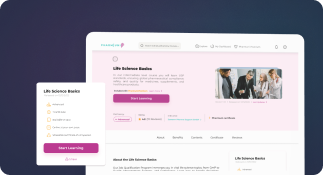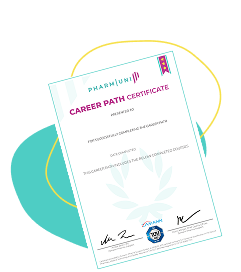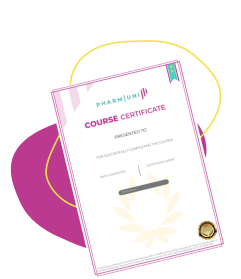Marketing in the pharma and medtech industries looks very different from consumer marketing. You can’t rely on flashy slogans, emotional appeals, or influencer campaigns. Instead, marketers must navigate strict regulations, complex stakeholder ecosystems, and ethical limitations. This guide will help you understand proven pharma marketing strategies, with actionable insights you can use today.
In highly regulated environments, a good marketing strategy does more than promote products. It builds trust with healthcare professionals (HCPs), supports patient education, and ensures safety information is communicated clearly. Every claim must be backed by science. Every message must align with legal frameworks such as FDA, EMA, or MDR requirements.
At the same time, technology and personalization are reshaping the industry. Omnichannel engagement, digital tools, and patient-centric approaches have become essential. So how can you succeed in this environment?
Whether you’re launching a drug or promoting a new medical device, we’ll show you what works—and why. From regulatory frameworks to lifecycle-based tactics, this article is your roadmap to marketing success in a controlled industry.
Let’s explore the strategies that get results—ethically and effectively.
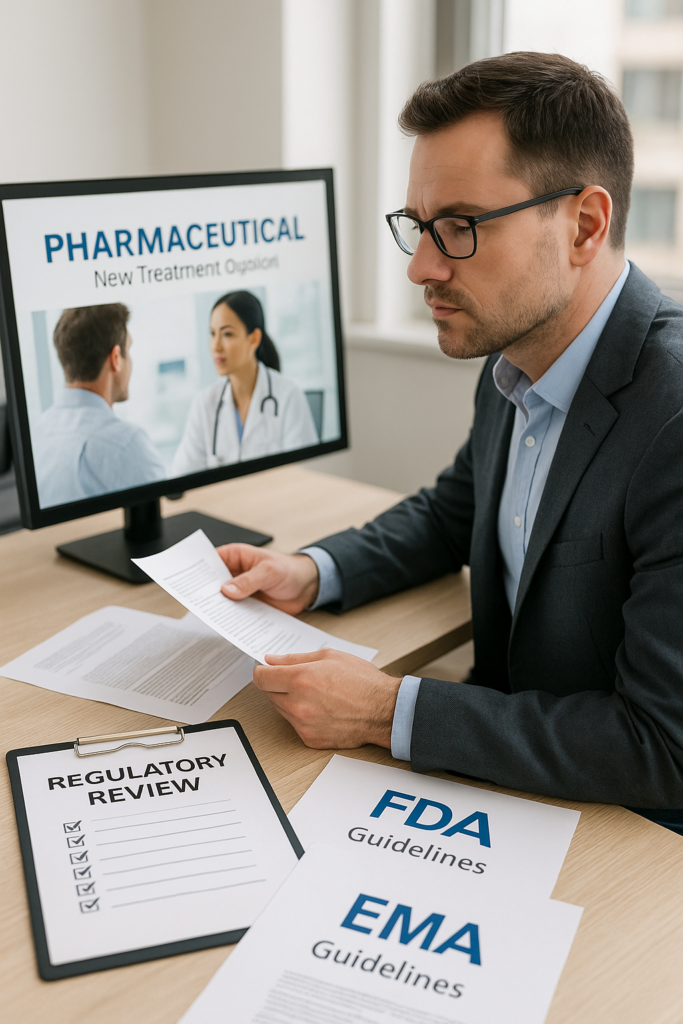
Understand the Regulatory Landscape First
Before building any marketing plan in pharma or medtech, you must understand the regulatory environment. Regulations are strict for a reason—because health and safety are on the line. Unlike traditional consumer industries, violations in this field can lead to product recalls, fines, or even revoked licenses. All pharma marketing strategies must begin with a strong understanding of regulatory boundaries and expectations.
Pharma marketers face multiple rules, including those from the FDA (21 CFR Part 202), EMA’s advertising guidelines, and pharmacovigilance regulations. Meanwhile, medtech marketers must comply with ISO 13485, the MDR (Medical Device Regulation), and FDA 21 CFR Part 820. Additionally, many countries have their own codes of ethics, like the EFPIA or PhRMA codes, that govern interactions with HCPs and patients.
That’s why every message, visual, and claim must go through medical, legal, and regulatory review. You can’t publish product content without proof of clinical validity or compliance documentation. Many companies also use promotional review committees to ensure compliance across all touchpoints.
Transitioning from print brochures to digital channels doesn’t eliminate the rules—it multiplies them. Social media posts, e-mails, and webinars must still follow the same advertising standards. So, your first priority should always be: “Is this compliant?”
If you skip this step, you risk everything else falling apart. Marketing in pharma and medtech must start with compliance—not creativity.
Key Stakeholders in Pharma and Medtech Marketing
To succeed, effective pharma marketing strategies must align with each stakeholder’s priorities and responsibilities. Each one has different needs and expectations.
- Healthcare Professionals (HCPs): Focus on clinical value, safety data, and evidence-based outcomes.
- Patients and Caregivers: Provide clear, jargon-free education on proper use and benefits.
- Regulatory Bodies: Ensure your promotional content meets legal and scientific standards.
- Hospital Procurement Teams: Highlight cost-effectiveness, quality certifications, and supplier credibility.
- Medical Affairs Teams: Align on data usage, publications, and clinical messaging.
- Sales Teams: Equip them with compliant, compelling materials for field execution.
- Payers and Insurers: Emphasize health economics, comparative studies, and reimbursement support.
- Distributors and Channel Partners: Clarify logistics, product handling, and training resources.
Align Marketing with Product Lifecycle
In pharma and medtech, your marketing strategy must evolve alongside the product lifecycle. To stay effective over time, your pharma marketing strategies must align with each lifecycle phase. Each stage—development, approval, launch, maturity, and decline—requires different messaging, channels, and goals. You cannot rely on a single, static plan throughout the product’s lifespan.
Instead, lifecycle-based marketing allows you to stay relevant, address regulatory changes, and respond to customer feedback. It also helps align internal teams, like sales, medical affairs, and regulatory, by defining clear roles at each phase. When done right, lifecycle marketing maximizes product value and boosts long-term impact.

Lifecycle Marketing for Pharmaceuticals
Pharmaceutical products move through strict clinical and regulatory phases before reaching the market. Your marketing must support each one with targeted strategies. During clinical trials, communication is limited to medical affairs or investor relations. However, awareness-building starts early by educating stakeholders on unmet needs.
After regulatory approval, HCP education becomes a priority. You should focus on treatment guidelines, dosage, and safety profiles. Field reps, symposia, and key opinion leaders (KOLs) play vital roles. Mid-lifecycle, real-world data (RWD) strengthens your brand by validating outcomes. You can use it in approved promotional materials.
In the mature phase, competition increases. Emphasize patient support, adherence, and pharmacovigilance updates. Highlight your drug’s continued safety and value. As patents expire, pivot to lifecycle extensions like new indications or formulations. Your strategy must evolve—or risk losing market share.
Lifecycle Marketing for Medical Devices
Marketing for medtech products follows a faster, more iterative rhythm than pharmaceuticals. Devices often go through multiple design tweaks and testing phases before launch. During development, you can engage clinicians to test prototypes or share usability feedback.
Pre-launch, focus on preparing the market. Create awareness campaigns targeting clinicians and procurement teams. Demo sessions, explainer videos, and educational materials can build anticipation. Once approved, showcase clinical value through real-life use cases. Share physician testimonials and comparative studies.
During post-launch, support adoption with hands-on training and fast-response customer service. Highlight performance improvements and workflow efficiencies. As usage grows, gather post-market data to refine messaging and demonstrate ROI to buyers. Eventually, consider bundling devices with digital tools or service plans.
When newer technologies emerge, reposition your product by targeting niche segments or cost-conscious buyers. Marketing throughout the device lifecycle should always reflect evolving user needs and evidence—not just features.

Best Promotional Channels in Pharma and Medtech
Choosing the right channel is essential—effective pharma marketing strategies depend on using the right touchpoints.. Here are the most effective ones:
Medical Conferences and Congresses
- Ideal for peer-to-peer education, showcasing data, and building credibility.
- These events help position your brand as a scientific authority while fostering trust with HCPs.
Webinars and Virtual Events
- Provide direct engagement without geographic limits.
- You can educate doctors, demo devices, or explain new research live, with compliance-approved content.
Field Sales Enablement Tools
- Equip reps with compliant materials, e-detailers, and CRM integration.
- These tools allow personalized communication while capturing data on HCP preferences.
Email Marketing and Newsletters
- Share product updates, safety alerts, or educational content directly.
- Emails are cost-effective but must include disclaimers, opt-out options, and legal review.
Social Media (with Caution)
- Reach broader audiences with compliant disease-awareness content.
- Avoid direct product claims unless your internal team has built strong social governance policies.
Medical Journals and Publications
- Publish peer-reviewed research to support claims and build authority.
- This gives your product credibility and a solid foundation for downstream marketing efforts.
Using CRM and Analytics for Targeted Marketing
Data is the backbone of modern pharma and medtech marketing. Without it, campaigns miss the mark and waste budget. CRM (Customer Relationship Management) and analytics tools help you understand your audience and optimize every message. They let you move from generic outreach to truly targeted communication. Today’s best pharma marketing strategies rely on CRM and analytics for better targeting and results.
With the right setup, you can track every HCP interaction, email open, or training session. You can see which channels work best, what content resonates, and where engagement drops off. Analytics also allows teams to collaborate better, because decisions are based on real insights—not assumptions. Most importantly, using data ensures your marketing stays relevant, timely, and compliant.
It’s not just about collecting numbers. It’s about using them to improve strategy and personalize outreach. The result? A smarter, more effective marketing engine that delivers value to all stakeholders.
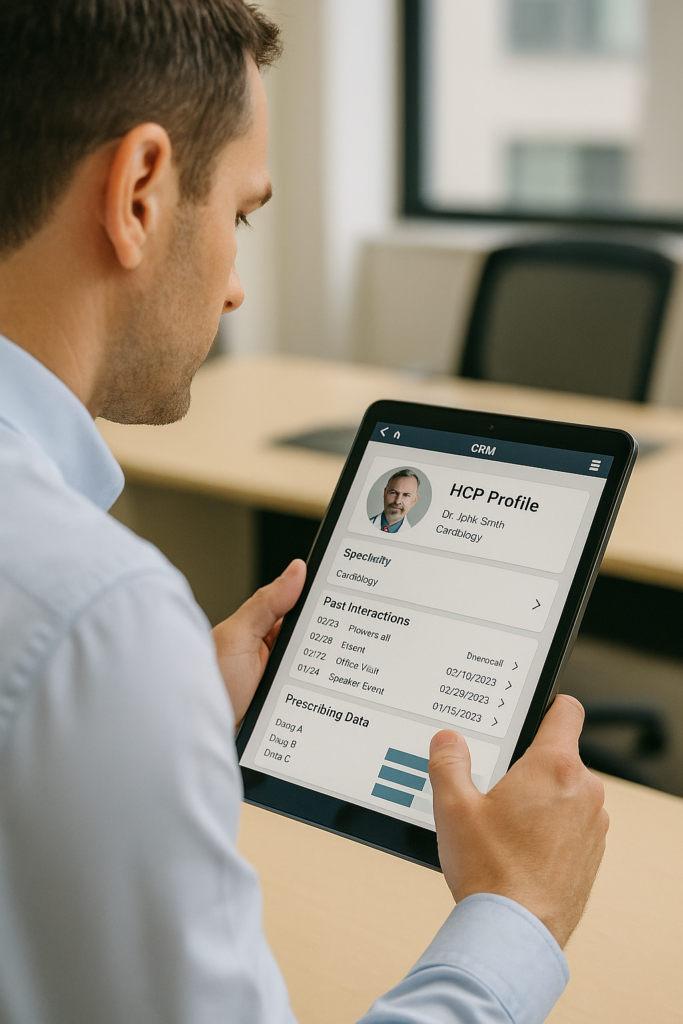
CRM-Driven Personalization for HCP Engagement
CRM platforms give pharma and medtech teams powerful tools to manage HCP relationships at scale. These systems store contact history, specialties, location, and preferred channels. You can track event attendance, webinar interactions, and email engagement.
This data lets marketers segment HCPs by behavior, interests, or treatment focus. For example, cardiologists receive tailored messages with data on cardiovascular endpoints. CRM also supports automated reminders, product updates, and educational series. That means fewer missed touchpoints and better timing.
Sales reps benefit, too. With real-time insights, they can prepare more relevant visits or calls. CRM systems integrate with digital asset management tools, so reps share approved content only. This maintains compliance while boosting personalization.
By using CRM insights, marketing teams build stronger relationships. Each message feels more useful—and more human. Over time, this increases trust, product understanding, and clinical adoption.
Leveraging Analytics for Smarter Campaign Decisions
Analytics turn raw data into actionable marketing intelligence. You can measure content performance, channel effectiveness, and audience behavior. This allows you to continuously refine your strategy.
For example, if doctors don’t open your emails, switch timing or subject lines. If one landing page converts better, replicate its design and tone. These small improvements add up over time, creating more efficient campaigns.
Advanced analytics platforms can segment audiences by geographic location, prescription habits, or digital behavior. You can then build targeted campaigns that speak to specific needs or concerns. A regional launch may need a different strategy than a national rollout.
Analytics also helps with budgeting. Track ROI per channel and optimize spending accordingly. You’ll learn where to cut costs—and where to double down.
In a regulated space, every campaign must deliver results. Analytics gives you the confidence to test, learn, and grow—without crossing compliance boundaries.

Common Mistakes in Marketing Strategy
Avoid these pitfalls to ensure your pharma and medtech marketing stays effective:
- Skipping Regulatory Review: Launching materials without MLR review leads to risk and noncompliance. Always route content through legal, medical, and regulatory teams before publication.
- Focusing Only on Features: Highlighting technical specs isn’t enough—talk about benefits and patient impact. Clinical results and workflow improvements matter more than buzzwords.
- Neglecting Education: Don’t assume doctors or patients understand how to use your product. Clear, accessible training materials prevent misuse and improve satisfaction.
- Overloading with Jargon: Too much technical language can alienate non-specialist stakeholders. Simplify complex concepts without dumbing them down.
- Ignoring Digital Strategy: Traditional brochures alone won’t cut it. A strong digital presence ensures broader and faster engagement, especially post-COVID.
How to Build a Future-Proof Marketing Strategy
The pharma and medtech industries are changing fast. Regulatory updates, digital transformation, and patient expectations reshape how marketers operate. To stay ahead, your strategy must be adaptable, data-driven, and compliant.
You cannot rely on one-size-fits-all campaigns anymore. Instead, focus on modular planning—so you can react quickly to market changes. Train your team regularly on compliance, digital tools, and evolving audience behavior. This builds internal resilience and marketing agility. Collaboration across departments also becomes essential. Regulatory, sales, and marketing must work as one team.
Additionally, using smart tools helps scale and measure success. Platforms like CRMs, automation software, and analytics dashboards keep your campaigns on track. They also reduce manual errors and improve response time.
To future-proof your pharma marketing strategies:
Stay updated on global regulations
Build a habit of reviewing FDA, EMA, and MDR guidance.
Adopt modular campaign design
Create materials that are easy to update when changes occur.
Invest in scalable tools
Use CRM, analytics, and automation platforms to support growth.
Segment your audience clearly
Group stakeholders by role, need, or engagement level.
Train cross-functional teams often
Ensure all departments understand compliance and strategy alignment.
The future belongs to marketers who can adapt quickly—without sacrificing compliance or trust.
Conclusion
By applying modern, data-driven pharma marketing strategies, you can improve outcomes while maintaining full compliance. Marketing in pharma and medtech isn’t about gimmicks—it’s about trust. Your audience expects accuracy, transparency, and real value. By aligning with compliance rules, stakeholder needs, and product lifecycles, you create campaigns that don’t just generate leads but improve lives.
Start with the regulations. Know the FDA, EMA, MDR, and ISO frameworks like the back of your hand. Then build messaging rooted in science and real-world outcomes. Segment your audience, personalize your approach, and use digital tools to amplify your reach—without crossing legal lines.
Success in this space comes from strategy, not shortcuts. By applying the steps in this guide, you’ll reduce risk, increase engagement, and elevate your brand as a trusted healthcare partner.
Pharmuni’s Marketing in Pharma and Medtech course is your next step
References:
[1] U.S. Food and Drug Administration – Prescription Drug Advertising
[2] European Medicines Agency – Marketing and Promotion of Medicines
[3] Medical Device Coordination Group (MDCG) – Guidance under MDR
[4] Pharmaceutical Research and Manufacturers of America (PhRMA) – Code on Interactions with HCPs

Stephanie Männicke
Digital Marketing Especialist at Zamann Pharma Support, brings 8 years of experience in Corporate and Digital Communication. Specializing in Digital Marketing and Content Creation, Stephanie is currently focused on creating strategic content for Pharmuni's networks, especially content on topics such as recruitment, onboarding and employer branding. Outside of work, Stephanie is a mum, a crocheter and a movie fan. An avid reader and in search of expanding her knowledge, Stephanie is always looking for ways to innovate communication in the digital environment and connect people in a genuine way.
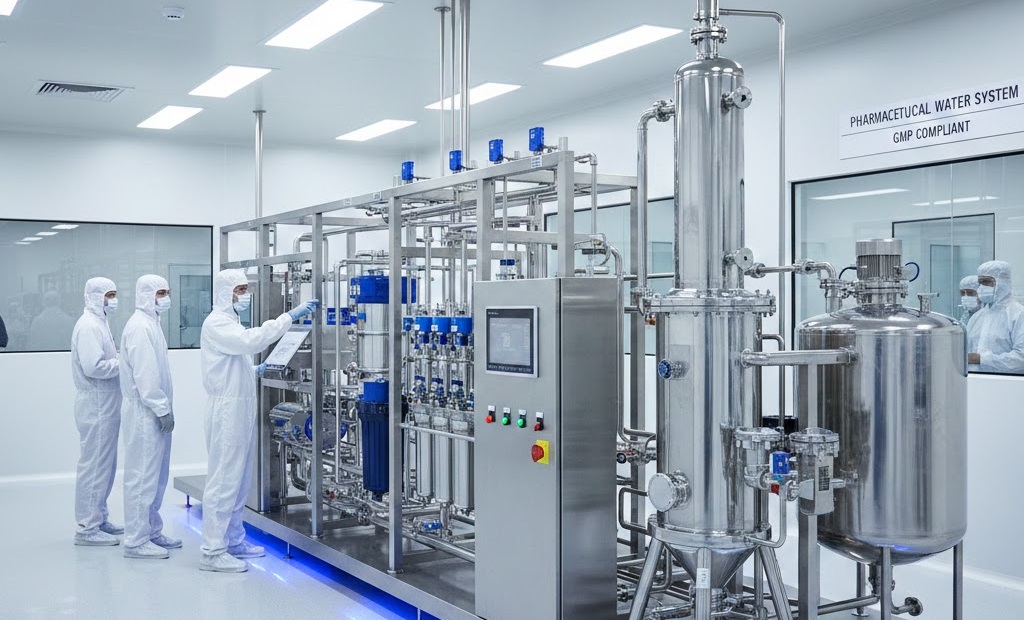
Pharmaceutical Water Validation: A Practical and Regulatory-Focused Guide in 2025
Learn how to validate pharmaceutical water systems with a clear, step-by-step approach. This guide covers Purified Water and WFI testing, from user requirements to sampling plans and acceptance limits. You will also learn how to run IQ, OQ, and PQ with strong documentation and traceable evidence.

Good Manufacturing Practices in Canada: Download Official GMP PDFs (2025)
Want official PDFs for good manufacturing practices in Australia? This page helps you choose and download the right TGA/PIC/S documents fast: PIC/S PE009-17 (Parts I–II + Annexes), plus GMP clearance, inspection reliance, code tables, and the submission user guide for TGA Business Services.

Good Manufacturing Practices (GMP) in Australia 2025: Download TGA GMP Guides
Want official PDFs for good manufacturing practices in Australia? This page helps you choose and download the right TGA/PIC/S documents fast: PIC/S PE009-17 (Parts I–II + Annexes), plus GMP clearance, inspection reliance, code tables, and the submission user guide for TGA Business Services.
